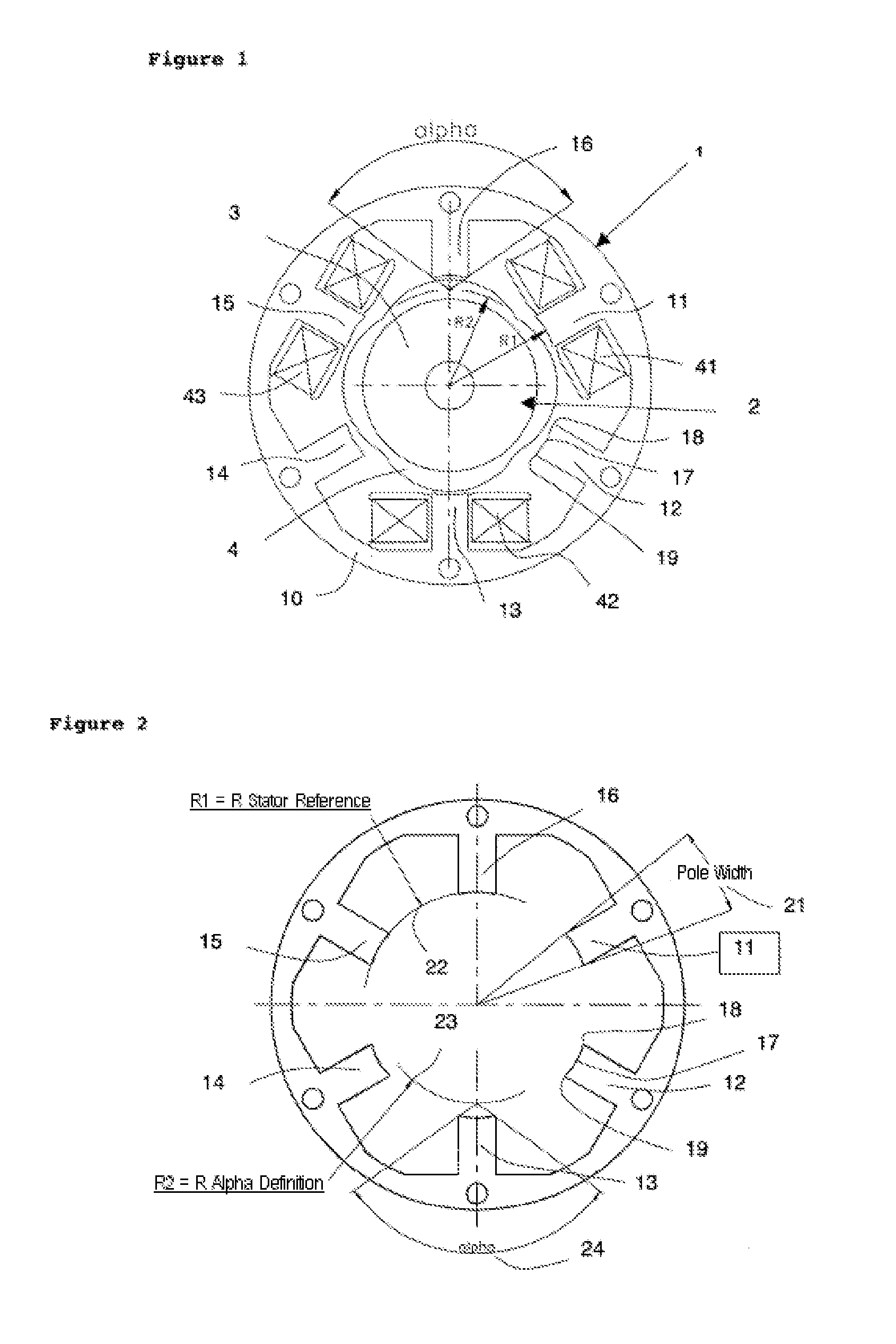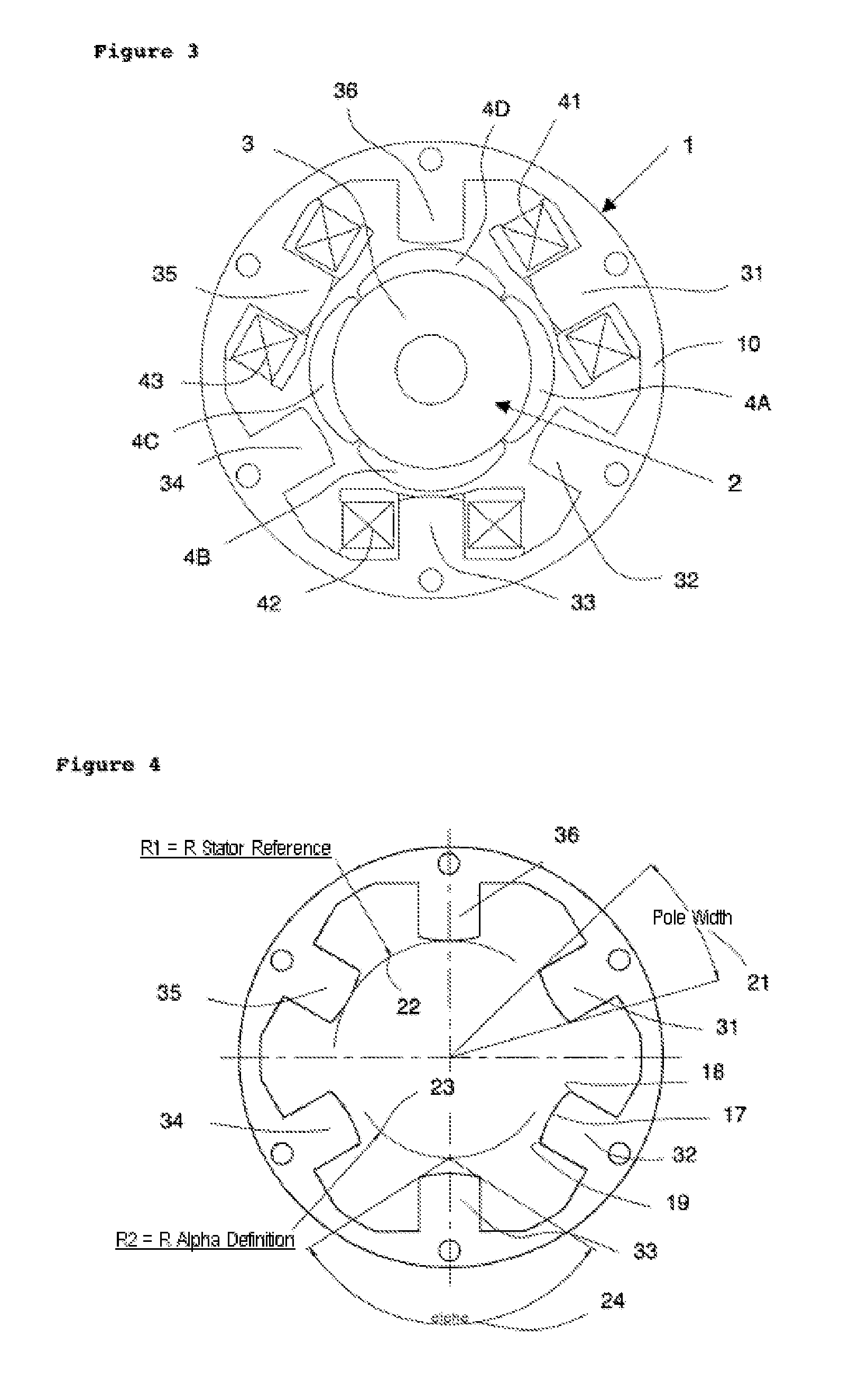Three-phase electric motor with a low detent torque
a three-phase electric motor and low detent torque technology, applied in the direction of machines/engines, magnetic circuit rotating parts, magnetic circuit shapes/forms/construction, etc., can solve the problems of incompatibility of stators with more economical winding methods, difficulty in controlling residual torque of these motors, etc., to avoid any saturation, economical winding, residual torque
- Summary
- Abstract
- Description
- Claims
- Application Information
AI Technical Summary
Benefits of technology
Problems solved by technology
Method used
Image
Examples
Embodiment Construction
[0031]One of the solutions used to produce a rotor is represented in FIG. 7, this rotor then exhibiting a sinusoidal induction. Four magnet tiles (4A, 4B, 4C and 4D) are glued onto an iron yoke (3). The external shape of these tiles makes it possible to approximate a sinusoidal induction, even if the magnetization of each of the tiles is produced in a single direction. For cost reasons, the geometry of these tiles must, however, remain simple and the manufacturing tolerances cause differences between each of the poles of the rotor. In practice, an induction such as that represented in FIG. 9 is therefore obtained. The harmonic breakdown, shown in FIG. 10, then reveals percentages which are 6.6% for the harmonic 3, 1.2% for the harmonic 5 and 0.6% for the harmonic 7. The aim of the present invention is to propose a simple and economical motor that will make it possible to use rotors with magnetization harmonic percentages of this order of magnitude, while obtaining very low residual ...
PUM
 Login to View More
Login to View More Abstract
Description
Claims
Application Information
 Login to View More
Login to View More - R&D
- Intellectual Property
- Life Sciences
- Materials
- Tech Scout
- Unparalleled Data Quality
- Higher Quality Content
- 60% Fewer Hallucinations
Browse by: Latest US Patents, China's latest patents, Technical Efficacy Thesaurus, Application Domain, Technology Topic, Popular Technical Reports.
© 2025 PatSnap. All rights reserved.Legal|Privacy policy|Modern Slavery Act Transparency Statement|Sitemap|About US| Contact US: help@patsnap.com



